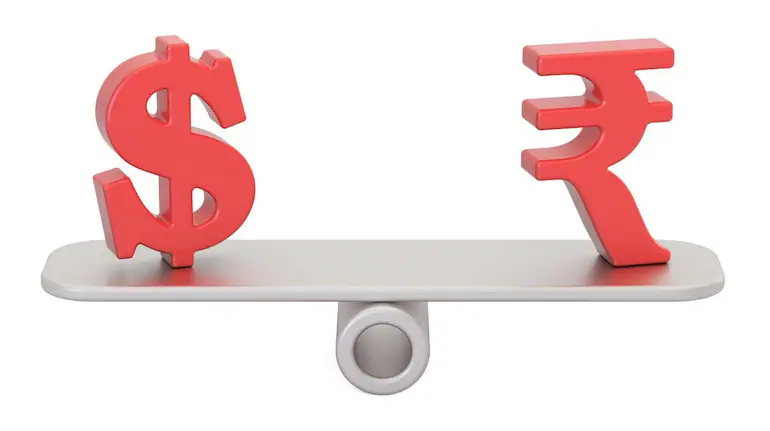
Increase in Raw material cost due to devaluation of rupee
- दिसम्बर 13, 2022
- 0
A fall in the rupee is generally considered good news for exporters. This is because when the rupee falls, the price of Indian goods and services in the foreign market decreases, which is expected to increase their demand. Also, the amount received increases when the payment received in dollars is exchanged for rupees.
But if imported raw materials are used in the manufacturing of goods to be exported or the currency of the importing country has depreciated against the Indian rupee, then Rupees. There is no benefit in declining of currency.
Yes, some sectors such as service related IT and labour-intensive textile sector do benefit. Apart from this, such products in which imported raw material is not used or we are importing from any country where the weakness of the currency is less than the Indian currency, then the weakness in the rupee is beneficial.
According to industry estimates, at least 50 per cent of exported goods are manufactured using imported raw materials. The current times remain challenging for exporters due to low global demand, rising inflation and high volatility in the currency market.
Commodity prices are already skyrocketing globally in the wake of post-Covid demand surge, continued supply disruptions, and shortfall in production due to adverse weather, while rupee weakness added to it domestically has given.
According to RBI calculations, every 5 per cent fall in the rupee increases inflation by 10 to 15 basis points. When there is a weakness in the rupee, the prices of everything that is imported increases, such as petroleum products, fertilizers, Urea, Phenol, Melamine face Veneer, Paper Pulp, Craft paper, Decorative Paper etc, because we have to pay more rupees for it.
Not only this, the cost of goods manufactured using these imported things as raw materials also increases.
रूपये के अवमूल्यन से कच्चे माल की कीमतों में इजाफा
रूपये में गिरावट को आम तौर पर निर्यात करने वालों के लिए अच्छी खबर माना जाता है। ऐसा इसलिए क्योंकि रूपये में गिरावट होने पर विदेशी बाजार में भारतीय वस्तुओं और सेवाओं की कीमत कम हो जाती है, जिससे उनकी मांग बढ़ने की उम्मीद रहती है। साथ ही डॉलर में मिलने वाले भुगतान को रूपये में एक्सचेंज करने पर मिलने वाली रकम बढ़ जाती है।
लेकिन अगर निर्यात की जाने वाली वस्तुओं में आयातित कच्चे माल का इस्तेमाल हुआ है, या आयात किए जाने वाले देश की मुद्रा भारतीय रूपये के मुकाबले कमजोर हुई है तो रूपये में गिरावट का फायदा नहीं होता है।
हां, कुछ क्षेत्रों जैसे कि सेवा (सर्विस) से संबंधित आईटी व श्रम केंद्रित टेक्सटाइल क्षेत्र को फायदा होता है। इसके अलावा ऐसे उत्पाद जिनमें आयातित कच्चे माल का इस्तेमाल न हुआ हो या हम ऐसे किसी देश को आयात कर रहे हों जहां की मुद्रा में कमजोरी भारतीय मुद्रा की तुलना में कम हो, तो रूपये में कमजोरी का फायदा होता है।
उद्योग के आकलन के मुताबिक कम से कम 50 फीसदी निर्यातित वस्तुओं के निर्माण में आयातित कच्चे माल का इस्तेमाल होता है। वैश्विक स्तर पर मांग में कमी, बढ़ती महंगाई और मुद्रा बाजार में भारी उतार-चढ़ाव की वजह से निर्यातकों के लिए मौजूदा समय ऐसे भी चुनौतीपुर्ण बना हुआ है।
कोविड के बाद मांग में आए उछाल, आपूर्ति को लेकर जारी व्यवधान, और प्रतिकूल मौसम की वजह से उत्पादन में आई कमी के मद्देनजर वैश्विक स्तर पर जिंसों की कीमतें पहले से ही आसमान छू रही है वहीं रूपये में कमजोरी ने घरेलू स्तर पर इसे और बढ़ा दिया है।
भारतीय रिजर्व बैंक की गणना के मुताबिक रूपये में हर 5 फीसदी की गिरावट महंगाई में 10 से 15 आधार अंक की बढ़ोतरी करती है। जब रूपये में कमजोरी आती है तो हर वह चीज जो आयात की जाती है, मसलन-फेनोल यूरिया, मेलामाइन, फेस विनीयर, क्राफ्ट पैपर, कागज की लुगदी, डेकोरेटिव पैपर आदि की कीमतों में इजाफा होता है क्योंकि इसके एवज में हमें ज्यादा रूपये चुकाने पड़ते हैं।
इतना ही नहीं, इन आयातित चीजों का कच्चे माल के तौर पर इस्तेमाल करके बनने वाली वस्तुओं की लागत भी बढ़ जाती है।































































